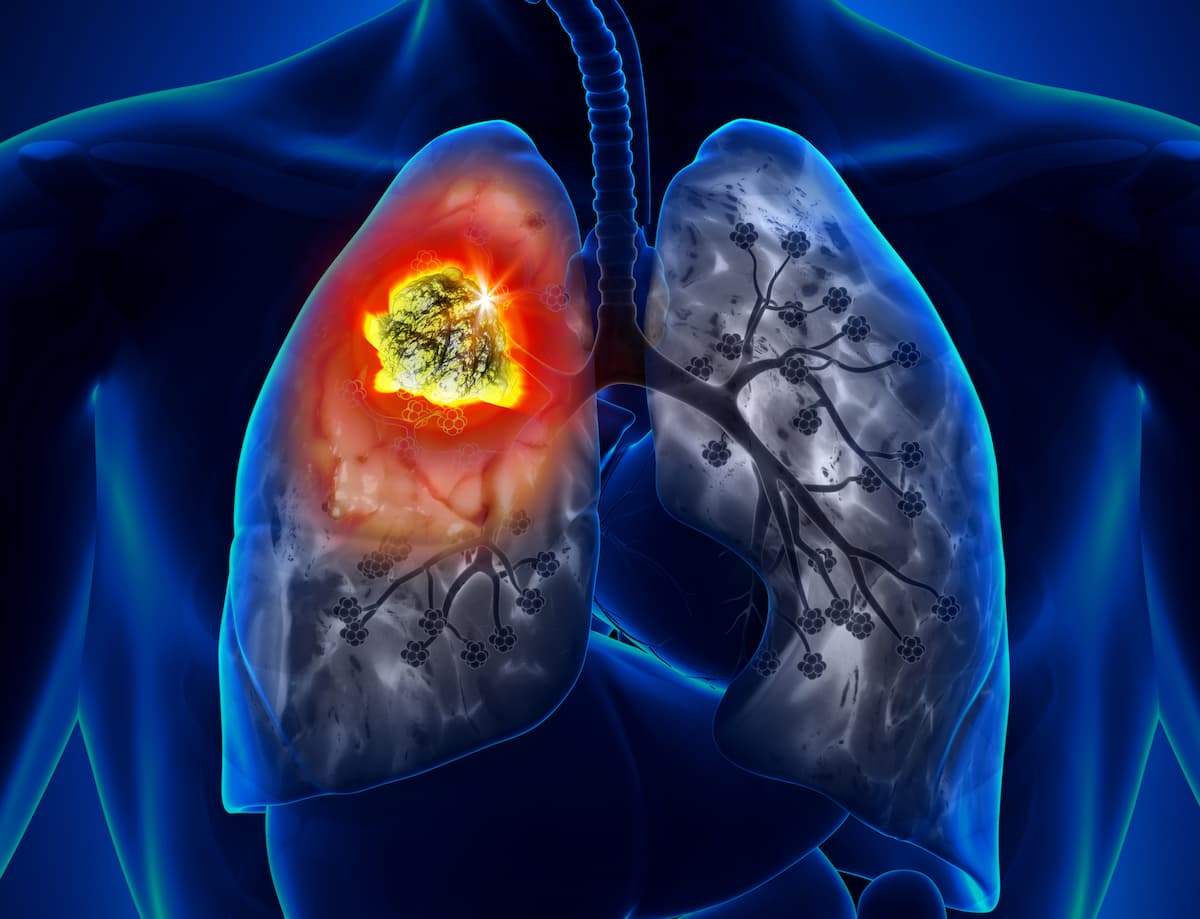BLA Submitted in Subcutaneous Amivantamab in EGFR-mutated NSCLC
Data from the phase 3 PALOMA study showed subcutaneous amivantamab had comparable ORR to intravenous administration for patients with EGFR-mutated NSCLC.
Data from the phase 3 PALOMA study showed subcutaneous amivantamab had comparable ORR to intravenous administration for patients with EGFR-mutated NSCLC.

A biologics license application (BLA) has been submitted to the FDA for a fixed combination of amivantamab-vmjw (Rybrevant) and recombinant human hyaluronidase for subcutaneous (SC) administration in all current approved or submitted indications of intravenous (IV) amivantamab for patients with EGFR-mutated non–small cell lung cancer (NSCLC), according to results from the phase 3 PALOMA-3 study (NCT05388669).1
Data from the phase 3, open-label, randomized PALOMA-3 study showed SC amivantamab (n = 206) had comparable overall response rates (ORR) (30%; 95% CI, 24%-37%) compared with IV administration(n = 212) (33%; 95% CI, 26%-39%) for patients with EGFR-mutated NSCLC.2
Additionally, SC amivantamab displayed shorter administration times (median less than 5 minutes vs 2-5 hours), a greater frequency of patient-reported convenience (85% in SC vs 52% in IV on cycle 1 day 1), a 5-fold decrease in infusion-related reactions (13% vs 66%).
"[Amivantamab] administered intravenously is a foundational treatment for patients with EGFR-mutated NSCLC," said Kiran Patel, MD, vice president of Clinical Development and Solid Tumors at Johnson & Johnson Innovative Medicine, said in the press release. "This subcutaneous option, administered in approximately 5 minutes, is a clinically important advancement that could transform the treatment experience for patients, oncologists, and nursing staff. We look forward to working with the FDA and global regulators in the review of these applications."
Further findings include the SC amivantamab arm had a median progression-free survival (PFS) of 6.1 months, (95% CI, 4.3-8.1) vs 4.3 months (95% CI, 4.1-5.7) in the IV arm (HR, 0.84; 95% CI, 0.64-1.10; P = .20). At 6 months, the median overall survival (OS) rate was 85% in the SC arm and 75% in the IV, and at 12 months it was 65% vs 51%. The median follow-up was 7 months (HR, 0.62; 95% CI, 0.42-0.92; P = .02).
In the SC arm, the median duration of response (DOR) was 11.2 months (95% CI, 6.1-not evaluable [NE], vs 8.3 months (95% CI, 5.4-NE) over the IV amivantamab arm.2 Additional data show that 29% of patients in the SC arm vs 14% in the IV arm had a response of 6 months or greater.
The PALOMA-3 study aimed to simplify amivantamab IV administration and reduce dose times through the assessment of a new formulation of amivantamab, SC amivantamab and co-formulated with recombinant human hyaluronidase (SC-CF).3 The formulation served to enhance patient and physician experience with amivantamab through easier and accelerated administration.
A total of 418 patients were enrolled in PALOMA-3.1 The study evaluated the pharmacokinetics (PK), efficacy, and safety of SC amivantamab combined with lazertinib (Leclaza) in patients with EGFR-mutated advanced or metastatic NSCLC following progression on osimertinib (Tagrisso) and chemotherapy. Trough concentration (Ctrough on cycle 2 day 1 or cycle 4 day 1) and cycle 2 area under the curve (AUC) days 1 to 15 were the 2 primary PK study endpoints. ORR and PFS were key secondary end points and OS was a predefined exploratory end point. Prophylactic anticoagulation was recommended for the initial four treatment months.
The dosage in the SC amivantamab arm was 1600 mg or 2240 mg if 80 kg or more weekly for the first 4 weeks and than every 2 weeks after.
In the IV amivantamab arm, treatment was administered at 1050 mg weekly or 1400 mg if 80 kg or more for the first 4 weeks then every 2 weeks after.
In both arms, Lazertinib was given at 240 mg by mouth daily.
Infusion-related reactions (IRR) included dyspnea (3% vs 20%), nausea (3% vs 20%), vomiting (2% vs 15%), and flushing (0% vs 12%) occurred in the SC and IV arms, respectively.
References
- Subcutaneous amivantamab biologics license application submitted to U.S. FDA for patients with EGFR-mutated non-small cell lung cancer. News release. Johnson & Johnson. June 17, 2024. Accessed June 17, 2024. https://tinyurl.com/ber349er
- Leighl N B, Hiroaki A, Sun Min L, et al. Subcutaneous amivantamab vs intravenous amivantamab both in combination with lazertinib, in refractory EGFR-mutated, advanced non-small cell lung cancer. J Clin Oncol. 2024; 42(suppl 17):LBA8505. doi:10.1200/JCO.2024.42.17_suppl.LBA8505
- A study of lazertinib with subcutaneous amivantamab compared with intravenous amivantamab in participants with epidermal growth factor receptor (EGFR)-mutated advanced or metastatic non-small cell lung cancer (PALOMA-3). ClincalTrials.gov. Updated May 22, 2024. Accessed June 17, 2024. https://shorturl.at/D5PGE
Newsletter
Stay up to date on recent advances in the multidisciplinary approach to cancer.